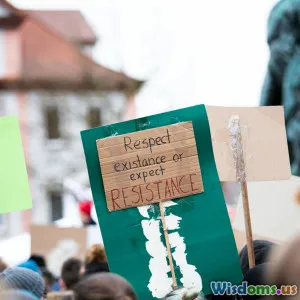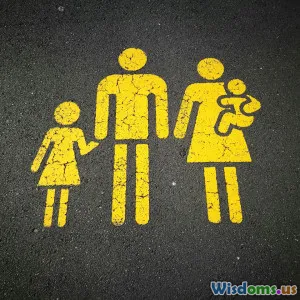
Comparing Marriage Rates in Rural Versus Urban Societies
7 min read An insightful comparison of marriage rates in rural and urban societies, exploring cultural, economic, and social influences shaping matrimonial trends. (0 Reviews)
Comparing Marriage Rates in Rural Versus Urban Societies
Marriage – a fundamental institution in cultures worldwide – varies widely not only across countries but also within them, particularly when contrasting rural and urban environments. Understanding these differences unveils deep insights into how culture, economics, and social dynamics shape personal decisions about family and relationships.
Introduction
Why do people in rural areas often marry earlier and more frequently than their urban counterparts? Conversely, why might urban populations delay or even forgo marriage entirely? These questions reveal complex intersections of tradition, opportunity, societal pressures, and evolving values.
This article delves into how marriage rates markedly differ between rural and urban societies, examining the underlying factors driving those patterns with data-driven analysis and real-world examples.
Historical and Cultural Foundations
Rural societies traditionally emphasize early and stable marriages as vital for community continuity and economic survival. Agrarian lifestyles benefit from larger family units, producing more hands for farming and sustaining family lineage. For instance, in many Sub-Saharan African villages, marriage remains a central rite with significant social status.
In contrast, urban areas historically offer more diverse opportunities, leading to altered family structures. The bustling urban environment attracts increased education and career options, encouraging individuals to prioritize personal and professional development before marrying.
Example: United States Trends
According to the U.S. Census Bureau data from 2020, the median age at first marriage is consistently lower in rural counties compared to urban ones; in rural areas, individuals marry around 26 for men and 24 for women, whereas urban counterparts average closer to 30 for men and 28 for women.
This delay in urban marriage aligns with increased higher education rates and extended economic independence.
Economic Influences on Marriage Decisions
Economics profoundly impacts marriage rates. In rural areas, economic limitations often reinforce early marriage as a strategy to pool resources and sustain livelihoods. Married couples may rely on shared labor within agriculture or family businesses for survival.
Urban residents face more complex economic considerations. The cost of living, housing prices, and job market fluctuations often lead to delayed marriage or cohabitation without formal ties.
Insight: Rising Costs and Marriage Age
Research from the Pew Research Center highlights that urban dwellers increasingly delay marriage due to financial insecurity, student loan debt, and housing affordability challenges. These economic factors correlate strongly with reduced or later marriage rates in cities.
Social Norms and Expectation Variances
Social expectations around marriage differ enormously between rural and urban societies.
-
Rural societies: Marriage is often seen as a social requirement, intertwined with religion, family honor, and communal identity. The stigma attached to remaining single or having children outside marriage can be significant.
-
Urban environments: There is a growing acceptance of alternative lifestyles, including cohabitation, single parenthood, and remaining unmarried. The urban population tends to adopt more liberal views regarding the timing and necessity of marriage.
Case Study: India’s Diverse Landscape
In India, marriage remains nearly universal in rural areas, often arranged within caste and community boundaries. Urban centers, especially metro cities like Mumbai and Delhi, witness an increasing number of love marriages and a rising preference for career prioritization before marital commitment.
Educational Attainment and Its Role
Education level is a powerful predictor of marriage patterns. Increased educational attainment generally correlates with postponed marriage. Urban societies with higher educational access see individuals investing time in schooling and career establishment before considering marriage.
In rural settings where educational opportunities are scarcer, young adults often marry earlier due to limited alternatives.
Educational disparities also influence gender roles in marriage, especially in traditional societies where women with fewer career prospects marry earlier and often focus on household roles.
The Impact of Gender Roles and Expectations
Traditional gender roles persist more strongly in rural communities, where male breadwinner–female homemaker models are normative. This dynamic supports earlier marriages as women’s societal value is tied to family formation.
Urban areas increasingly embrace egalitarian perspectives, with dual-income households becoming the norm. This shift can pressure couples to delay marriage until economic conditions and career goals align.
Modern Social Movements and Changing Marital Landscapes
Movements promoting gender equality, LGBTQ+ rights, and alternative family structures find more fertile ground in urban centers, influencing marriage rates and styles. Rural areas may resist these changes, thereby adhering to more traditional marriage patterns.
This divergence manifests in differing legal frameworks and social acceptance, further complicating direct comparisons.
Conclusion
Comparing marriage rates between rural and urban societies reveals a multifaceted tapestry where culture, economy, education, gender roles, and social values intricately interact.
Rural communities lean towards earlier, more frequent marriages driven by tradition and economic pragmatism, while urban populations delay or redefine marriage amidst broader life possibilities.
Understanding these differences matters beyond academic curiosity—it helps policymakers tailor social programs, supports respectful cultural dialogues, and informs individual choices in our rapidly urbanizing world.
By examining real data and cultural nuances, we gain a compassionate appreciation for how diverse life contexts shape one of humanity's most enduring social institutions: marriage.
Rate the Post
User Reviews
Popular Posts





















